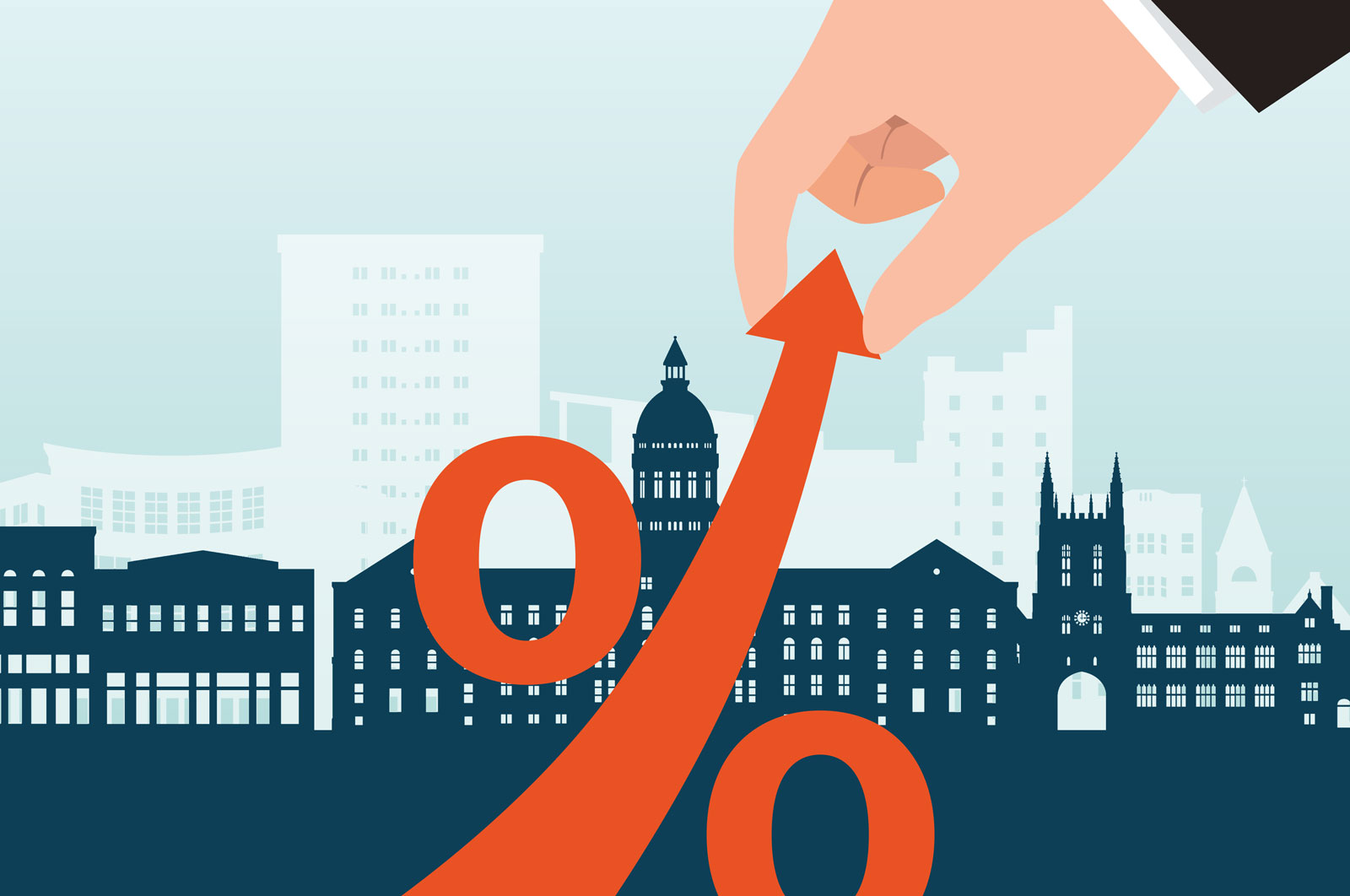Here’s how interest rate increases affect our daily lives

With many subjects in the news vying for our attention — from the stock market fluctuations, to inflation, or that whole election thing last month — one maybe-not-so-sexy topic that affects our lives in many ways is the recent increase in interest rates.
Many readers might often see headlines that the Federal Reserve (aka the “Fed”) plans to increase rates by x% again, y times in the next year, and figure it might as well be a lecture by the schoolteacher from Charlie Brown cartoons: “Wah wah waaah.” (You know the sound. But in case you’ve forgotten, here’s a link.)
Up until just last year, interest rates had been super low for a good decade. In fact, ever-lower rates had been the trend going back about 40 years, longer than many COMO residents have been alive.
The overall effect of low interest rates is that it helps borrowers but hurts savers. It makes borrowing money cheap, but on the flip side means savers and bond investors get paid near nothing. This is purposeful to get an economy stimulated, as taking out a loan to buy big-ticket items like a house or a car will have lower loan payments.
On top of that, federal pandemic stimulus programs provided American consumers a lot of extra cash, burning a hole in their pockets. Suddenly, inflation caught up with us, with the highest cost of living increases in 40 years — including an insane feeding frenzy in residential real estate, making for an out of balance seller’s market, driving up home prices.
Course corrections.
To bring the cost of living back down to earth, there’s been a recent reversal to instead increase interest rates. This purposefully hurts borrowers, making it more expensive to take out a new loan and to slow down runaway consumer prices. The flip side is that it helps savers and bond investors to actually earn some interest again.
For instance, mortgage rates jumping from about 3% to 7% earlier this year basically doubles many borrowers’ monthly payments. Buyers can no longer afford to pay as much for a house, putting downward pressure on home prices.
COMO has a lot going for us, and a strong competitive advantage compared to many other communities where people could live, work, study, or recreate.
Local home builders have gotten more cautious about starting that next spec home. Realtors’ sales volumes have subsided, affecting their take home pay. Financial providers making mortgage loans have seen activity slow down, including the trend in mortgage loan refinancing (re-fis have utterly dried up).
Homeowners who, say, had a loan from years ago at 8%, then when rates drifted to 5%, found it smart to refinance to lower their monthly mortgage payments; then when rates bottomed out again at about 3%, did so again.
Tapping the brakes.
So now with rates on the sharp uptick, that opportunity for consumers has come to a halt.
It’s a similar story for other big-ticket items which buyers commonly take out a loan to purchase, like automobiles. Buying the same price car is more expensive now than it was even months ago, due to higher interest rates causing higher car payments. This also has a cooling effect on prices.
Local small businesses are experiencing sticker shock with their monthly payments on loans for operating funds, which feature adjustable rates. Rates were low and stable for years, but now with this sharp uptick, the cost of carrying a loan balance has shot up in recent months. Same goes for many homeowners with supplemental loans, such as a Home Equity Line Of Credit (HELOC) with a floating rate.
Already struggling with other higher expenses, and the continued labor shortage, many small businesses have to refocus on their cash flow — or tighten up collecting payments from customers. Back in the era of cheap loans, a payments lag wasn’t so costly, or worth paying so much attention to.
Any reader in a line of work that heavily depends on borrowed money is already being affected by this — from real estate to auto sales, and certainly banks.
Still, this is not doomsaying, as people will still need houses and cars, (as well as food and furniture). It was just this sharp run-up in prices had to be brought down to earth.
Columbia’s competitive advantage.
COMO’s local economy would certainly not likely crater, either. In past economic cycles, Columbia was said to be “recession proof” — if not at least “recession resistant.” COMO has a lot going for us, and a strong competitive advantage compared to many other communities where people could live, work, study, or recreate.
We are big enough to have any essential goods or services, but small enough to avoid many big-city problems. We have a diversified economy, many cultural and physical amenities, and (relatively) good highway access. We have many well-educated residents with Midwestern values of hard work, honesty, cooperation, and charity.
COMO has long been a magnet for the best and brightest in the region. How many thousands came here from rural and small-town communities within a 50- to 100-mile radius, for college or a job opportunity, and decided to stick around? Likewise, as other communities might hit economic problems, even more people might end up gravitating our way.
Just as COMO at large could benefit from a flight to quality, so do individual professionals in their fields. Though the macroeconomy may be in flux, quality realtors, mortgage lenders, builders, car dealers, retail sales reps, accountants, etc. will always attract the best opportunities, regardless.
The best in their field stands to be resilient through downturns, whereas mediocre providers feel the pain of less lucrative conditions. It tends to be those more marginal providers — with less real value to offer customers in the first place — who are the first to fold when the easy times dry up.
Rising interest rates make it more expensive to borrow money, though the increases help savers. This is a big deal, which most of us have no personal experience with. It is not the end of the world, but even for those with a steady income and stable lifestyle, it’s smart to consider how this trend affects you, get good advice, and make any prudent tweaks in your household or business.

Steve Spellman is a lifelong Columbia-area resident and political observer.


